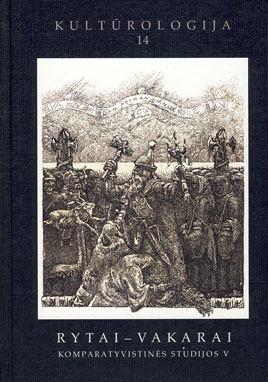Indijos ir Lietuvos kultūros bei meno padėtis atkūrus nepriklausomybę: panašumai ir skirtumai
Cultural, aesthetical and art situation in India and Lithuania after the reconstruction of the independence: similarities and differences
Author(s): Daiva TamošaitytėSubject(s): Cultural Essay, Political Essay, Societal Essay
Published by: Lietuvos kultūros tyrimų
Keywords: independence; culture; classical indian music; lithuanian music; european tradition; tendencies; the self
Summary/Abstract: In this article are discussed the main cultural, aesthetical and art situation and trends in India and Lithuania after restoring the independence. In a brief historical review the author uses comparative method and distinguishes two aspects: aesthetical-musicological and sociocultural. The motive to guide self-dependent cultural and social life has led india, as well as lithuania to the movement, in which influences of invading countries, i. E. England and Soviet Russia, were diminished and finally almost rejected. In the long course of oppression new genres and styles of music emerged wherein the crucial role played the innovations of the sound recording. Both countries had to face similar tendencies: the narrowing of the field of influence of a classical music, westernization, festivalization, global influences of show and cinema industries, and mixes of various kinds in art and music. Nevertheless India has kept its ancient aesthetic ideals and attitudes as a background, but Llithuanian culture finds itself in a more difficult position. It must mostly lean upon personal efforts of composers and post-folk movements, to try to assimilate the cultural pressure from the east and west. The author makes the conclusion that openness and creativeness in a global era must go hand in hand with the strong and clear authentic musical traditions, which must be reconstructed and protected in the context of the national cultural and socio-political reforms.
Journal: Kultūrologija
- Issue Year: 2006
- Issue No: 14
- Page Range: 162-181
- Page Count: 19
- Language: Lithuanian

